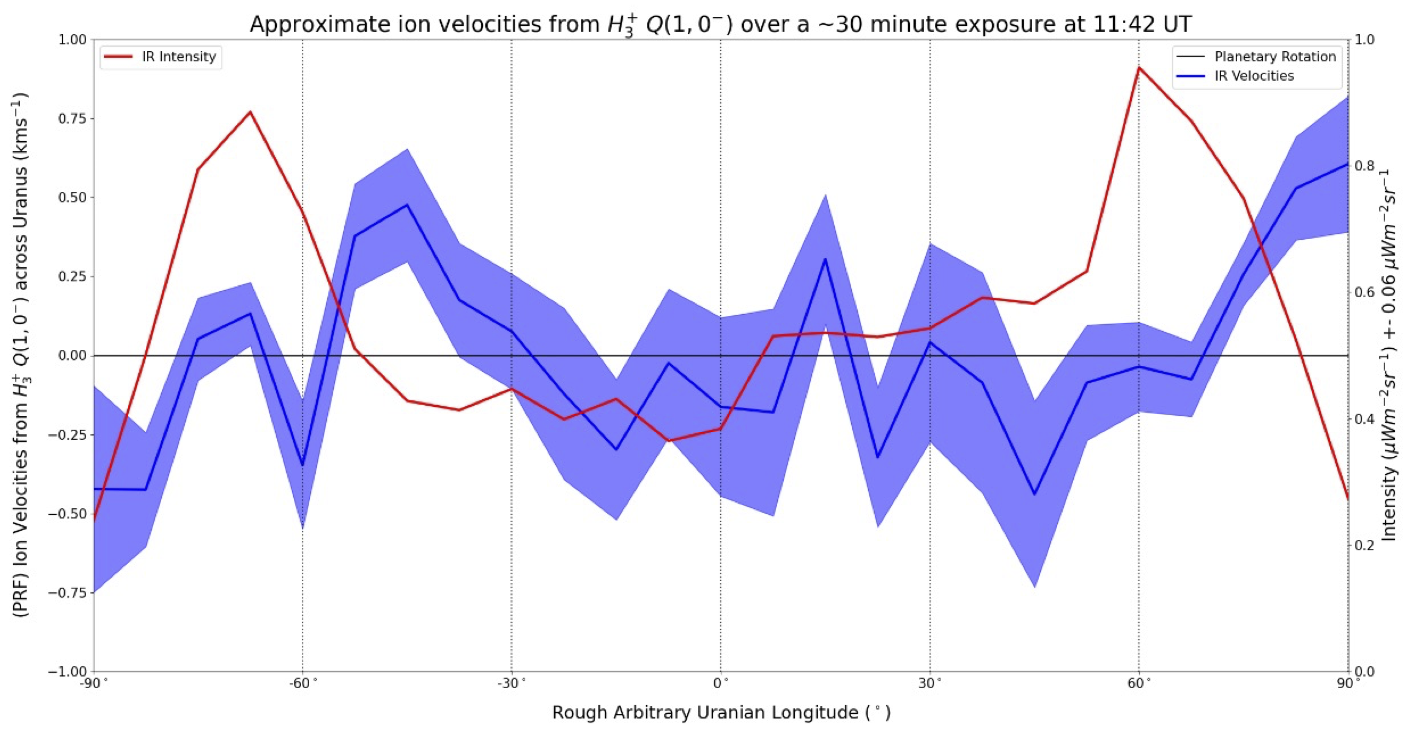H3+ Ion Doppler Velocities in the Upper Atmosphere of Uranus
- University of Leicester, Leicester, United Kingdom
H3+ measurements at Uranus have but recently shed light into the morphology of Uranus’s infrared aurora. Observations in late-2006 by Thomas, et al., in review showed enhanced emissions in the northern hemisphere similar in latitudinal range to the northern aurora (Herbert and Sandel, 1994). Surrounding temperatures confirmed these enhancements were not thermally driven, and were instead raised by elevated column densities, leading to the first confirmed mapping of the infrared aurora. Similarly, a strong dawn enhancement in infrared emissions was observed in mid to late-2016 by Melin, et al., 2019 (Fig 1.). These emissions were localised to latitudes where the southern aurora was expected but the study unable to confirm if this was auroral.
Our recent research has extended the 2016 investigation to include new infrared emission maps alongside temperature, column density and the first observed ionospheric flows at Uranus (Fig 1.), using data from the NASA IRTF. The study of ion flows at Jupiter (Johnson, et al., 2017) and Saturn (Chowdhury, et al., 2022) have greatly enhanced our understanding of these planet’s atmospheres and magnetic field interactions, and so tracing out ion flows at Uranus can indicate the presence of auroral activity and hence map out direct interactions between Uranus’s ionosphere and magnetosphere. Initial findings present significantly varied ion flows at auroral latitudes (Fig 1.) showing a glimpse of the ion transport systems at the planet’s aurora, we also observe, similar to Melin, et al., 2019, a repeated enhancement of H3+ at the dusk limb of Uranus, suggesting the lifetime of H3+ is far longer than previously thought.
These findings of H3+ ion flows at Uranus present a unique avenue of auroral investigation at Uranus and with the use of high spectral telescopes, we hope this tool will strength upcoming JWST observations by surveying and drawing out the first complete auroral structures across Uranus.

Figure 1. H3+ intensities (red) between ~25°S and ~60°S latitudes. The auroral event is observed on the dawn side (-80° to -40° longitude) along with fluctuating ion velocities (blue) which vary between -0.5 to 0.5 kms-1 from the Planetary Reference Frame Velocity (PRF) (black).
How to cite: Thomas, E., Stallard, T. S., Melin, H., Wang, R., and Chowdhury, M. N.: H3+ Ion Doppler Velocities in the Upper Atmosphere of Uranus, Europlanet Science Congress 2022, Granada, Spain, 18–23 Sep 2022, EPSC2022-1258, https://doi.org/10.5194/epsc2022-1258, 2022.

